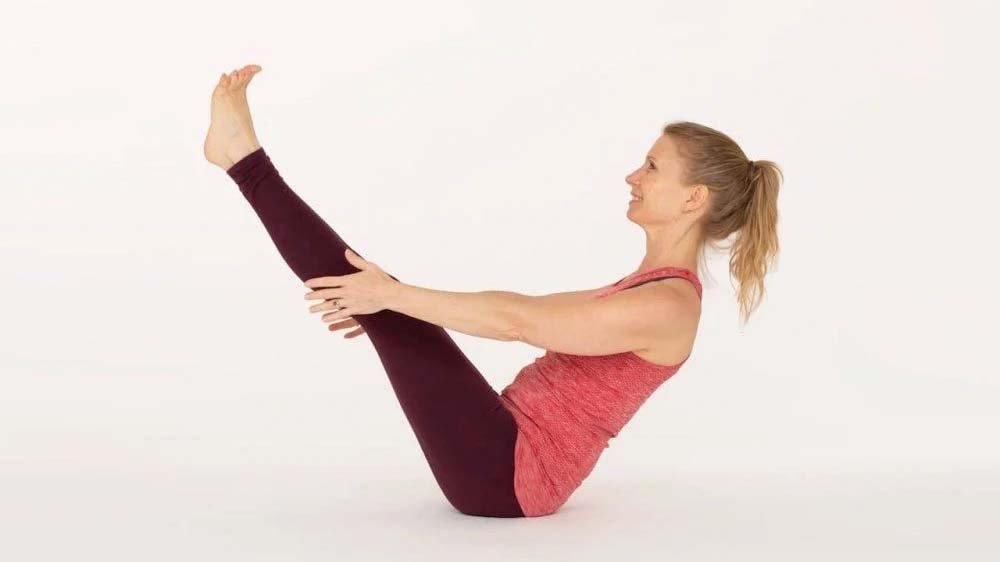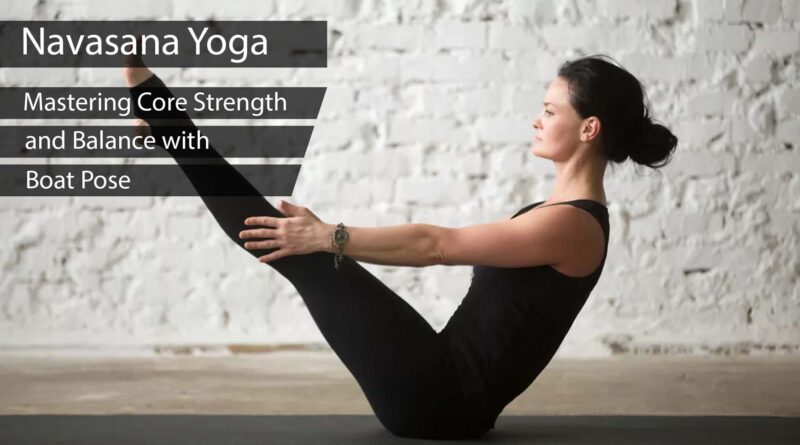Navasana Yoga: Mastering Core Strength and Balance with Boat Pose
Table of Contents
Introduction
Navasana Yoga, commonly known as Boat Pose, is a powerful yoga posture that engages the core muscles, cultivates balance, and promotes overall strength and stability. Derived from the Sanskrit words “nava” (meaning boat) and “asana” (meaning pose), Navasana mimics the shape of a boat floating on water, symbolizing strength, determination, and the ability to navigate life’s challenges with grace.
In this article, we will explore the steps, benefits, variations, and precautions associated with Navasana Yoga, allowing you to harness the transformative potential of this pose for your physical and mental well-being.
How to Perform Navasana Yoga
To practice Navasana Yoga, follow these step-by-step instructions:
Step 1: Begin by sitting on a yoga mat with your legs extended in front of you and your spine tall.
Step 2: Bend your knees, keeping your feet flat on the mat.
Step 3: Place your hands slightly behind your hips, fingers pointing toward your feet.
Step 4: Engage your core muscles, lift your chest, and lean back slightly while maintaining a straight spine.
Step 5: On an exhale, lift your feet off the mat, aiming to bring your shins parallel to the floor.
Step 6: Extend your arms forward alongside your legs, reaching toward your toes.
Step 7: Maintain a strong core, lifted chest, and relaxed shoulders.
Step 8: Hold the pose for 20-30 seconds or as long as you can maintain proper form.
Step 9: To release, gently lower your feet to the mat, relax your core, and return to a seated position.
Benefits of Navasana Yoga
Regular practice of Navasana offers a wide range of benefits, including:
a. Strengthened Core Muscles: Navasana targets the abdominal muscles, including the rectus abdominis, obliques, and transverse abdominis, leading to increased core strength and stability.
b. Improved Digestion: The compression of the abdominal region in Navasana stimulates the digestive organs, promoting healthy digestion and alleviating digestive issues.
c. Toned Leg Muscles: Holding the position engages the quadriceps, hamstrings, and hip flexors, leading to improved leg strength and muscle tone.
d. Enhanced Balance and Coordination: Boat Pose challenges your balance and improves proprioception, the body’s awareness of its position in space, leading to enhanced coordination and stability.
e. Increased Spinal Strength and Flexibility: The pose helps strengthen the muscles supporting the spine, promoting a healthy back and improved posture. It also stretches the back muscles, increasing spinal flexibility.
f. Boosted Confidence and Willpower: Navasana requires focus, determination, and mental resilience. Regular practice can instill a sense of confidence and willpower that extends beyond the yoga mat.

Variations of Navasana Yoga
Here are a few variations of Navasana that you can explore to add variety and challenge to your practice:
a. Half Boat Pose (Ardha Navasana): In this variation, keep one leg extended on the mat while lifting the other leg and balancing on the sitting bones. Alternate the legs for a balanced practice.
b. One-Legged Boat Pose (Eka Pada Navasana): Lift one leg off the mat while keeping the other leg extended. This variation intensifies the core engagement and challenges your balance further.
c. Revolved Boat Pose (Parivrtta Navasana): From the full Boat Pose, twist your torso to one side, bringing the opposite elbow to the outside of the bent knee. This variation adds a spinal twist and further engages the oblique muscles.
Precautions and Contraindications
While Navasana Yoga is generally safe for most practitioners, it’s important to consider the following precautions:
a. If you have any recent or chronic injuries to the lower back, hips, or abdomen, consult with a healthcare professional or an experienced yoga instructor before attempting Navasana.
b. Pregnant women or individuals with high blood pressure should avoid or modify Boat Pose to ensure their safety and comfort.
c. If you experience any pain or discomfort during the pose, gently release the posture and seek guidance from a qualified professional.
Conclusion
Navasana Yoga, the Boat Pose, invites you to embark on a journey of strength, balance, and inner resilience. By incorporating this transformative posture into your regular yoga practice, you can cultivate a strong core, improved balance, and a sense of inner stability.
Remember to approach Navasana with patience, listen to your body’s signals, and embrace the empowering benefits that this pose offers. Set sail on your yoga mat, navigating life’s challenges with grace and strength through the practice of Navasana.





